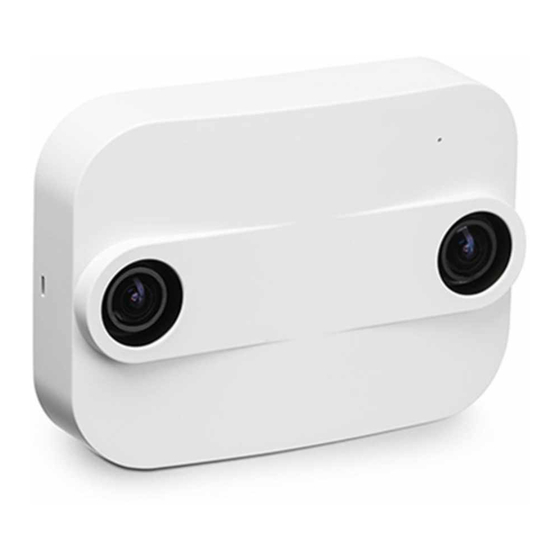
Table of Contents
Advertisement
Quick Links
Advertisement
Table of Contents

Summarization of Contents
Overview
Content Declaration
Statement of manual's content and applicability.
PC-Series hardware concept
Describes the physical design and mounting options of the sensor.
PC-Series 3D sensor
Details specifications for PC2 and PC3 sensor models.
Installation Fundamentals
Network requirements
Outlines cable and negotiation requirements for network connection.
Power over Ethernet
Specifies PoE power requirements for sensor operation.
Sensor LED
Explains the function and states of the sensor's LED indicator.
Configuration & Usage
Person tracking
Explains how the sensor detects and tracks individuals.
Setting up a sensor
Guides through the initial sensor setup process.
Xovis Sensor Explorer
Introduces the tool for managing sensors in the network.
Access the web interface
Explains how to connect to the sensor's web interface.
Login to the sensor
Describes the login process and default credentials.
Navigation
Explains the structure of the web GUI navigation bar.
Setup Wizard
Guides through the initial configuration process.
Live View
The default landing page after login or setup.
Analytics View
Provides tools for analyzing stored count data.
Config View
Allows comprehensive sensor configuration.
Settings
Holds all sensor settings, including management of users and data push.
Plugins
Manages sensor functionalities through plugins.
Users
Manages administrator and user accounts.
System
Manages time, language, privacy, and sensor reset.
Network
Configures network parameters and remote access.
Multisensor
Configures multisensor features and sensor stitching.
Status View
Displays current sensor status and information.
Firmware Upgrade
Process for updating sensor software or firmware.
Extended Analytics
Provides advanced diagnostic views.
Configuration Changes from Another Client
Handles concurrent configuration updates.
Connection Warning
Alerts about connectivity issues affecting UI functionality.
Troubleshooting
False Behavior
Addresses issues like unwanted detections or tracking errors.
Masks
Introduces exclusion and taboo masks for handling scene disturbances.
Exclusion Masks
Defines zones as invalid for tracking to ignore objects.
Taboo Masks
Defines areas excluded from processing to act as scene boundaries.
Placement of Dwell Zones
Dwell Time Calculation Influence
Explains how track placement affects dwell time analysis.
Start/Stop Points for Zone Placement
Uses start/stop points to identify tracking area for optimal zone placement.
Time Synchronization Mechanism
Behavior during Power/Connection Loss
Describes time sync behavior after power or connection interruptions.
Technical Data
General Specifications
Covers temperature, humidity, size, weight, power, and connection.
Data Bandwidth Requirements
Details bandwidth needs for optimal sensor performance.
Analytics Features
Lists analytics capabilities like count lines/zones and data retention.
Certificates / Tests
Emission Requirements
Standards related to radio disturbance characteristics.
Immunity Requirements
Standards for immunity characteristics.
Safety Requirements
Safety standards for IT equipment.
FCC Compliance
Notes FCC rules and measures for interference.
Custom Integration
API Access
How to access raw sensor data via an API.
Plugin Architecture for Custom Plugins
Using the plugin architecture for developing custom solutions.


Need help?
Do you have a question about the PC3 and is the answer not in the manual?
Questions and answers